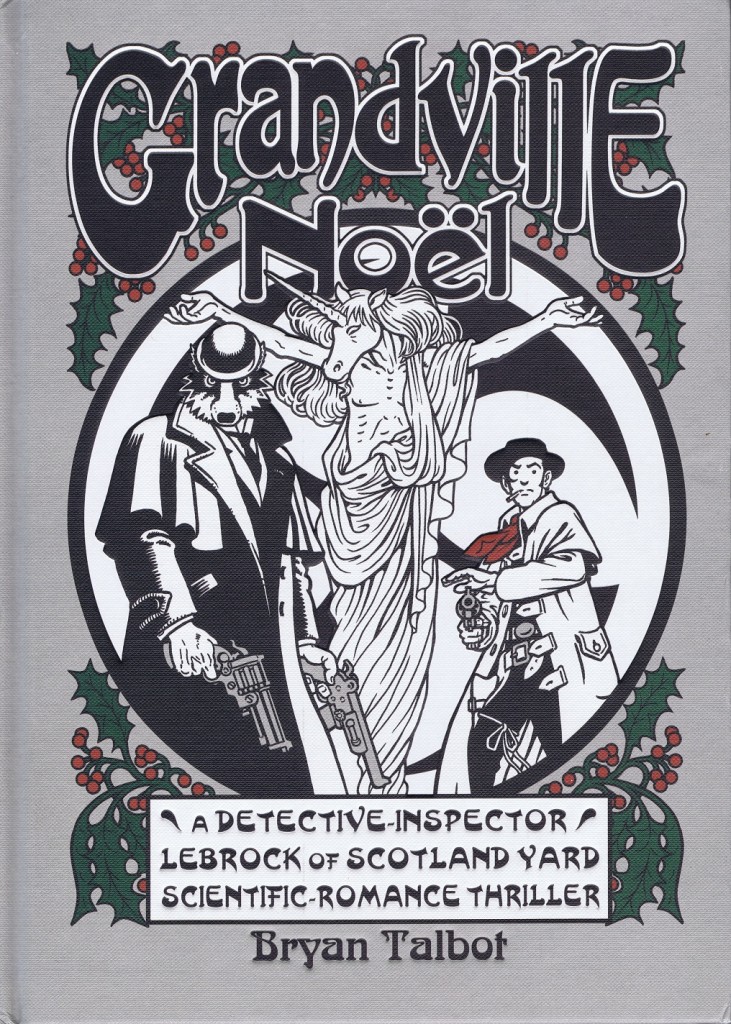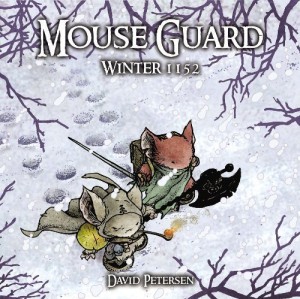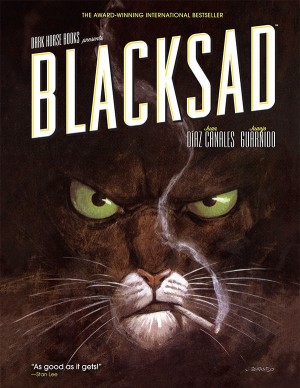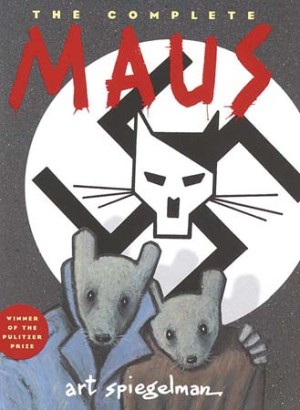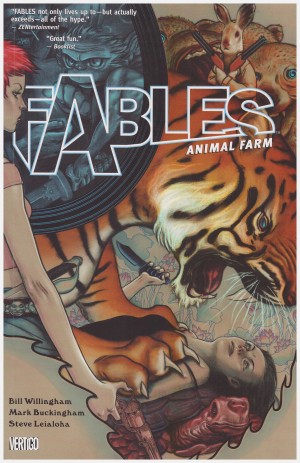Review by Jamie McNeil
While religion, predominantly Christendom, features in Bryan Talbot’s grand world where France won the Napoleonic wars and steam-punk technology marks the skyline there is no real mention of Christ, or even which species he is. There’s no question that he was a beast and that the doughfaces (humans) are the inferior race with no other right or privilege than to serve their animal masters. A unicorn named Apollo with powers to seduce and charm has arrived in Grandville claiming to be the Messiah, animals from across the Empire flocking to join his cult The Silver Path. One such is Bunty Spall, the niece of Detective Inspector Archie Le Brock’s housekeeper. Le Brock sets out after her as a favour, and to get his mind off some bad news.
In Grandville Le Brock meets Chance Lucas, a human working for the Pinkerton Detective Agency and tasked with bringing Apollo to justice for crimes committed in America, where all beings are seen as equal after they threw off the shackles of French Imperialism years earlier. Forced to work together, Le Brock finds himself questioning his prejudices and facing his dark inner turmoil. They uncover a major conspiracy to take power, upset the gangland status quo, avoid human terrorists and angry mobs, and the issue becomes locating a document that reveals the species of The Christ falls into the wrong hands. Le Brock will need to learn to put his issues aside so that he and Chance have a chance at saving Bunty, his lady love Billie and the human race.
Talbot spends a lot more time building the history he began to add to in Bête Noire, both ends of the story preparing us for further developments. Talbot’s narrative remains riveting even as he continues to explore new horizons for his creation. There’s a lot more historical commentary here, from cults, ethnic cleansing to the struggle for civil liberties in all forms from the peaceful to the aggressive. Some plot aspects move quickly, Chance’s back-story for one, and it helps to have read the previous books as Talbot is at this point really progressing his characters based on past events. There is a dark and ugly vein, with angry violent mobs, gritty action and the ugly side of human nature shining through in Talbot’s art, but there is still an element of fun that never veers towards the shallow end. Talbot knows just when a joke will work and when it won’t, making use of his artwork to disarm you before getting in your face just a page or two later. He uses religious imagery to spectacular effect and frequently creates a quiet moment to trick you into believing his characters are warm and fuzzy. The influence of European creators like Morris, Hergé, Goscinny and Uderzo is celebrated and Talbot has definitely learned a thing or two from studying them. Spotting a caricature of a familiar character in the background remains a fun aspect of Grandville, demonstrating just what an eye for detail Talbot has.
Grandville is a superbly written series that looks equally great. The smart, individually coloured and engraved hardcovers have both visual and tactile appeal, complimenting the work within. Among admirers are authors Phillip Pullman, Michael Moorcock and Ian Rankin. There really is a little something for everyone here. Grandville‘s fifth and final instalment Force Majeure concludes the series.
